Revenue Triage: Order Preservation
When to invest. When to let go. How to do it.
U.S. passenger car sales are down 53% year-over-year. New housing starts are projected to drop by 50% or more. Digital advertising contracts have declined by more than 30%. Live entertainment and travel demand is practically non-existent. Nearly every industry is facing delay or cancellation of orders as a result of COVID-19, leaving revenue leaders and sales teams scrambling.
Here’s what NOT to do in response: Don’t play order preservation roulette. Many companies leave order preservation up to their salespeople, who will inevitably focus on key accounts, large orders, or personal relationships. These may not be the right places to invest. Don’t play full-court defense either. Trying to cover everything will only spread sales reps too thin and divert needed attention from places where the focus will deliver results.
We have facilitated discussions with hundreds of leaders in the last month on the topic of revenue triage during the COVID-19 pandemic. Here’s what we’ve found: granular targeting, fast-cycle non-product innovation, and actively managed sales readiness and sales discipline really matter.
Understanding how to effectively invest in order preservation requires three key actions:
1. Granular Targeting: Prioritize fence sitters who have incentive to buy.
A multi-billion dollar building products manufacturer experienced a demand drop of 15% since the onset of the pandemic. Initial efforts yielded limited results as key accounts struggled across the board. However, combining macro-level trend analysis with highly detailed project-level assessment pointed to work already underway that was still slated to finish, leaving the window open for continued demand. Shifting sales focus from key accounts to project-specific opportunities allowed leaders to zero in on salvageable revenue.
Where are the higher probability order preservation opportunities for your company? Quickly target where you want sales time spent and make sure salespeople are extremely clear on this prioritization. Normal segmentation rules may not apply – you need to look at your customers’ operations through the lens of the crisis to figure out which ones are most likely to need your offerings AND have the resources to pay for them today.
2. Fast-cycle Innovation: Offer cost-efficient sweeteners to get sitters off the fence.
Many service and go-to-market innovation can be deployed in 30-60 days.
LinkedIn saw a 23% decline in user interest as a result of COVID-related hiring freezes. Needing to demonstrate value in a weakened job market, they launched a 16-part online series of best practices for working from home. Offering a free introduction to its online learning platform, LinkedIn Learning, facilitated increased subscriber interaction while positioning for the long-term growth of its e-learning platform.
It’s possible to ‘sweeten’ deals while maintaining margins through add-ons with relatively high perceived value but low internal costs to deliver. Could new bundles, improved delivery accommodations, or extended warranties meet new needs and entice customers to buy? Product innovation generally has a long development timeline, but there are many services and go-to-market innovations that can be deployed in 30-60 days. Test options with trusted customers, see how they respond, refine, and scale.
3. Actively Managed Sales Readiness and Discipline: Prescribe and demand sales behavior change.
In just three weeks, a leading plumbing supplier transitioned its 100 field sales reps into skilled inside sales experts. As stay-at-home mandates were announced and face-to-face selling became untenable, leadership quickly pivoted teams to refocus on remote sales through active phone outreach, online delivery troubleshooting, and increased customer service. Daily team check-ins were instituted to reinforce new expectations and provide support while ensuring call targets were hit.
Shifting from field to inside sales can be daunting and requires your sales team to change its processes and behaviors–many of which have been deeply ingrained through years of experience. While new selling tools are certainly a part of the equation (e.g., new scripts, re-designed collateral, etc.), clarity about re-set expectations is what will ultimately drive results. True sales discipline requires over-communication of these new expectations, precise instruction about what to do and how to do it, and active monitoring to understand what is working and what is not.
Do not let this crisis go to waste.
Our experience is that leaders take market share during turbulent times when they quickly, accurately, and decisively execute against a broad portfolio of opportunities and risks. Do not let this crisis go to waste. Instead, use it as an opportunity to test, innovate new offers, and embed new sales processes & behaviors. Your actions now will be crucial in laying the foundation for outperformance as your end markets stabilize and recover and as the ‘new normal’ is established.

